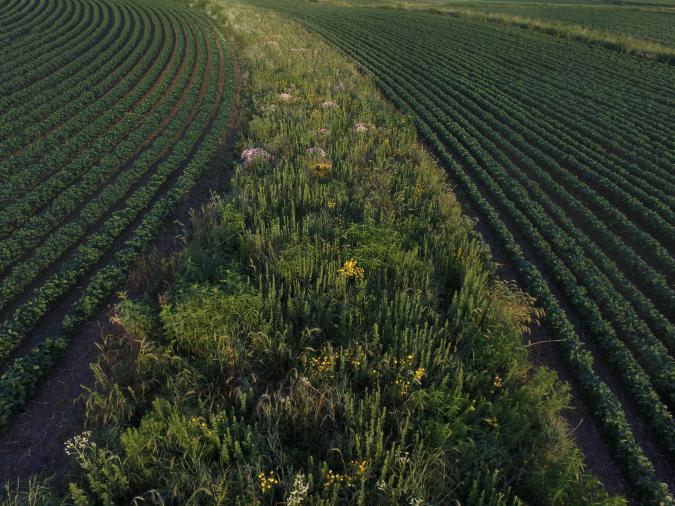How planting prairie strips on Iowa farms could save soil, water, wildlife and money — in-state and beyond

By Surya Zeeb
Published: January 28, 2020
Category: The Organic & Non-GMO Report Newsletter, The Bright Side
An Iowa State University program to encourage planting strips of native prairie on Iowa’s corn and soybean farms has been shown to significantly reduce soil erosion and runoff of phosphorous and nitrogen fertilizer, while establishing habitats for pollinator populations and reducing the need for pesticides.
Iowa State University’s “Science-Based Trials of Rowcrops Integrated with Prairie Strips” program, or STRIPS program, is encouraging farmers to plant 10 percent of their land to native prairie to help mitigate the negative effects of conventional agriculture.
The idea behind planting prairie strips is simple, according to ISU associate professor of entomology Matthew O’Neil, pollinator research lead for STRIPS.
“Why plant prairie species?” O’Neil said. “One, because they’re native, so they are things that have co-evolved for this region, for this landscape and for wildlife that’s here, and to some extent still is. They are also perennials—once they’re in the ground, they are present all year round.”
About 85 percent of Iowa’s 36 million acres were covered with prairie plants when Iowa became a state in the 19th century. But today, less than one-tenth of one percent of those prairie acres remain, as most of the state’s land has been converted to agricultural production.
But Iowa’s agricultural production, which is primarily corn and soybeans, has caused environmental problems. The state has lost 50% of its topsoil to erosion. Nitrogen fertilizer runoff from farms has polluted the state’s waterways and contributes to the massive “dead zone” in the Gulf of Mexico. Such pollution causes spikes in the amount of water-borne bacteria as well as algae bloom; both can kill fish and make people sick.
The STRIPS program has been shown to mitigate those problems. Prairie plants produce deep roots and soil structure that absorbs moisture and nutrients to prevent runoff. They also provide habitat for pollinators.
A peer-reviewed study of the effects of planting 10 percent of a row-crop field with prairie strips was published in 2017. The study found a 95% decrease in soil loss, a 44% reduction in water runoff on the fields, as well as runoff reductions of 90% in phosphorus and 84% in nitrogen. The study also found a reduction of emissions of heat-trapping gases.
Source: Little Village
To view source article, visit:




